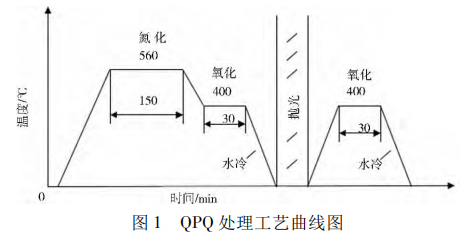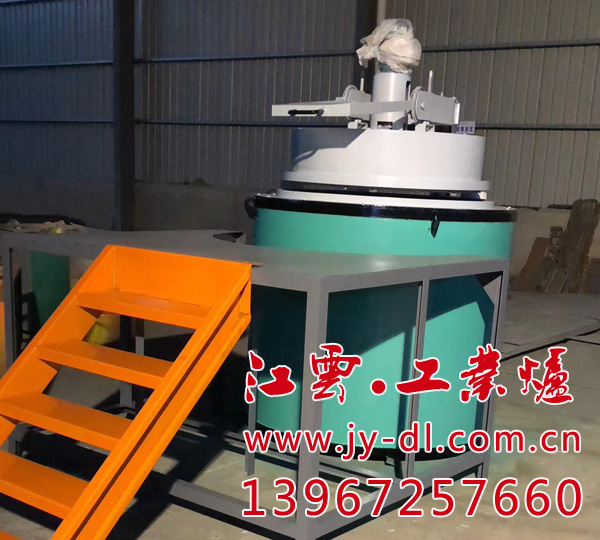 |
 |
The Effect of Anti rust Oil on the Corrosion Resistance of QPQ Infiltration LayerPublished by:2023-8-11 Categories: Company news Viewed by: 1950 times Corrosion is a common form of metal failure, which refers to the phenomenon of material deterioration, damage, and performance deterioration caused by the interaction between the material and its surrounding medium. Traditionally, the corrosion products of steel under atmospheric conditions are referred to as rust. Broadly speaking, the corrosion products generated by all metals under atmospheric conditions are collectively referred to as rust, and this corrosion process is called rusting. Inhibiting or delaying metal corrosion is of great significance.
At present, both QPQ technology and the use of rust preventive oil can greatly improve the corrosion resistance of metal products in terms of anti-corrosion applications. QPQ technology, also known as QPQ salt bath composite treatment technology, can form a Fe2-3N compound layer and a dense Fe3O4 oxide film on the surface of metal parts after QPQ technology treatment, making the metal parts have high corrosion resistance in atmospheric, salt spray, weak acid, concentrated alkali and other environments. QPQ treatment technology is applicable to a wide range of materials, covering the vast majority of black metals. As a product to prevent or slow down metal rusting, rust preventive oil is composed of one or more oil soluble corrosion inhibitors and other auxiliary additives added to the petroleum matrix components. It is mainly used for rust prevention between metal products, semi-finished product rust prevention, finished product transportation rust prevention, and finished product storage rust prevention. It has the advantages of good rust prevention effect, convenient use, low cost, easy operation, and easy removal. Coating rust prevention oil is one of the important means to protect metal products and has been widely used. The use of QPQ technology and anti rust oil can both improve the corrosion resistance of metal products. If combined with their characteristics and impregnated with anti rust oil after QPQ treatment, the corrosion resistance of mechanical products can be further improved, and there will be a wide range of application prospects in the mechanical industry. This issue compares the corrosion resistance of products treated with different anti rust oils, providing reference for QPQ users when selecting anti rust oils.
The experiment used a 35 # gas spring piston rod in a quenched and tempered state, with a size of φ 10mm * 200mm. To ensure data accuracy, the materials and QPQ process are the same. Divide the samples into 6 groups, with two pieces in each group. Take one piece from each group for QPQ treatment. The QPQ treatment process for the samples is shown in the following figure.
 Each group of tests was treated separately: the first group was a blank sample without oil, the second group was a fast drying rust preventive oil, the third group was a thin layer rust preventive oil, the fourth group was FCT 5856BF T1 rust preventive oil, the fifth group was ENSIS DW 960 rust preventive oil, and the sixth group was engine oil. The physical images of the five types of anti rust oils are shown below.
In a standard salt spray experimental environment, NaCl is a strong electrolyte that is highly hygroscopic and completely ionizes in water, electrolyzing into chloride and sodium ions. The corrosion of salt spray on the surface of metal materials is due to the relatively small radius of chloride ions with strong penetration ability, which can easily penetrate the oxide layer and protective layer of the metal surface and undergo electrochemical reactions with the internal metal, resulting in damage to the surface of the metal material. So neutral salt spray test is usually used to characterize the corrosion resistance of parts, as shown in the following figure.
Through experiments, it was found that the piston rod without any treatment rusted after 5 hours in a salt spray environment, while the sample treated with QPQ reached 160H in the salt spray test. This is because after being processed by the QPQ process, the microstructure of the sample surface is sequentially Fe3O4 oxide film, compound layer, diffusion layer, and substrate from outside to inside. The reason why the infiltration layer on the sample surface can achieve the effect of protecting the substrate from or slowing down corrosion is essentially that various physical and chemical methods interrupt or suppress the electrochemical corrosion process on the metal surface.
 The dense oxide film Fe3O4 in the infiltration layer has low friction coefficient and good chemical stability, which not only blocks the corrosion effect of air, liquid, etc. on the substrate, but also isolates the channel between the corrosive medium and the compound layer, protecting the compound layer from corrosion. The oxide in the oxide film also increases the oxygen content in the nitride layer, further improving the corrosion resistance of the sample; Due to the better corrosion resistance of the compound layer compared to the base material, the corrosion resistance of the sample is greatly improved under the dual protection of Fe3O4 oxide film and compound layer, resulting in a much longer salt spray corrosion resistance time than the sample without QPQ treatment.
The salt spray test time of the samples coated with anti rust oil was higher than that of the samples only treated with QPQ. Anti rust oil is usually made by mixing various materials such as film forming agents, oil soluble corrosion inhibitors, and other auxiliary additives (such as dispersants, antioxidants, mold inhibitors, and defoamers). Film forming agents can form an oil film on the metal surface, which enhances and protects the anti rust film. Oil soluble corrosion inhibitors are surfactants of oil, usually containing polar and non polar groups in the molecules. When corrosion inhibitor molecules adsorb on the metal surface, they undergo chemical reactions with the metal, forming an insoluble or insoluble passivation film, which hinders the corrosion process. The polar groups of corrosion inhibitor molecules rely on the physical or chemical forces between molecules to firmly adsorb on the metal surface. Non polar groups dissolve into oil, forming a tight targeted adsorption layer of corrosion inhibitor molecules at the oil-metal interface, preventing the invasion of water, oxygen, and other corrosive substances, thereby playing a corrosion inhibiting role. The FCT 5856BF T1 anti rust oil used in this experiment has a salt spray test time of over 300h, and has the best anti-corrosion effect.
Both QPQ treatment technology and the use of anti rust oil can greatly improve the corrosion resistance of metal products. The combination of QPQ treatment technology and anti rust oil can further improve the corrosion resistance of metal products, especially in special corrosive environments such as marine climates. By using QPQ technology to improve its corrosion resistance and the role of anti rust oil, it can be used as a means of inter process rust prevention, sealing rust prevention, and ultimately rust prevention, It can be widely used for sealing and protecting mechanical products in industrial production.
|
Tel: 86-0563-6849001 6849006
Fax: 86-0563-6849588
E-mail: zgl19821001@126.com
Adddress: Market town industrial zone, Dongting Township, Guangde County, Anhui Province
|
URL QR code |
